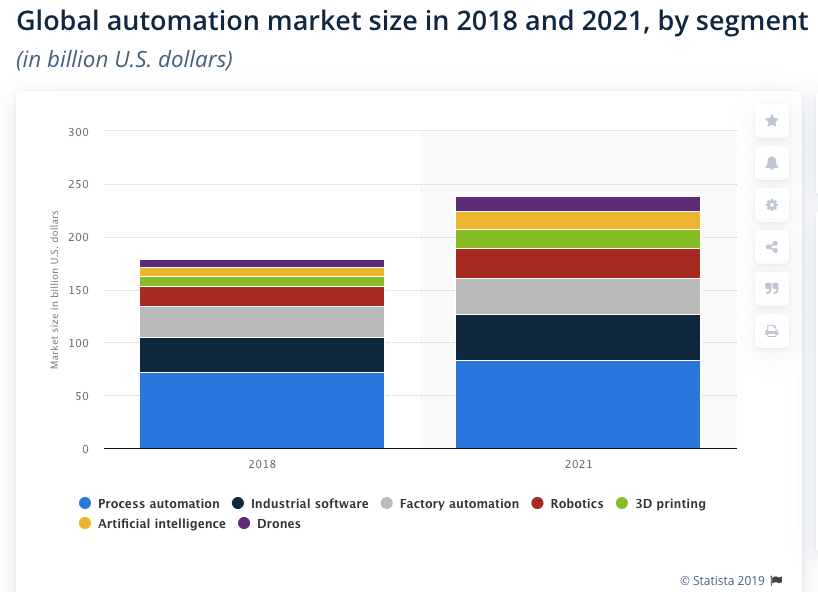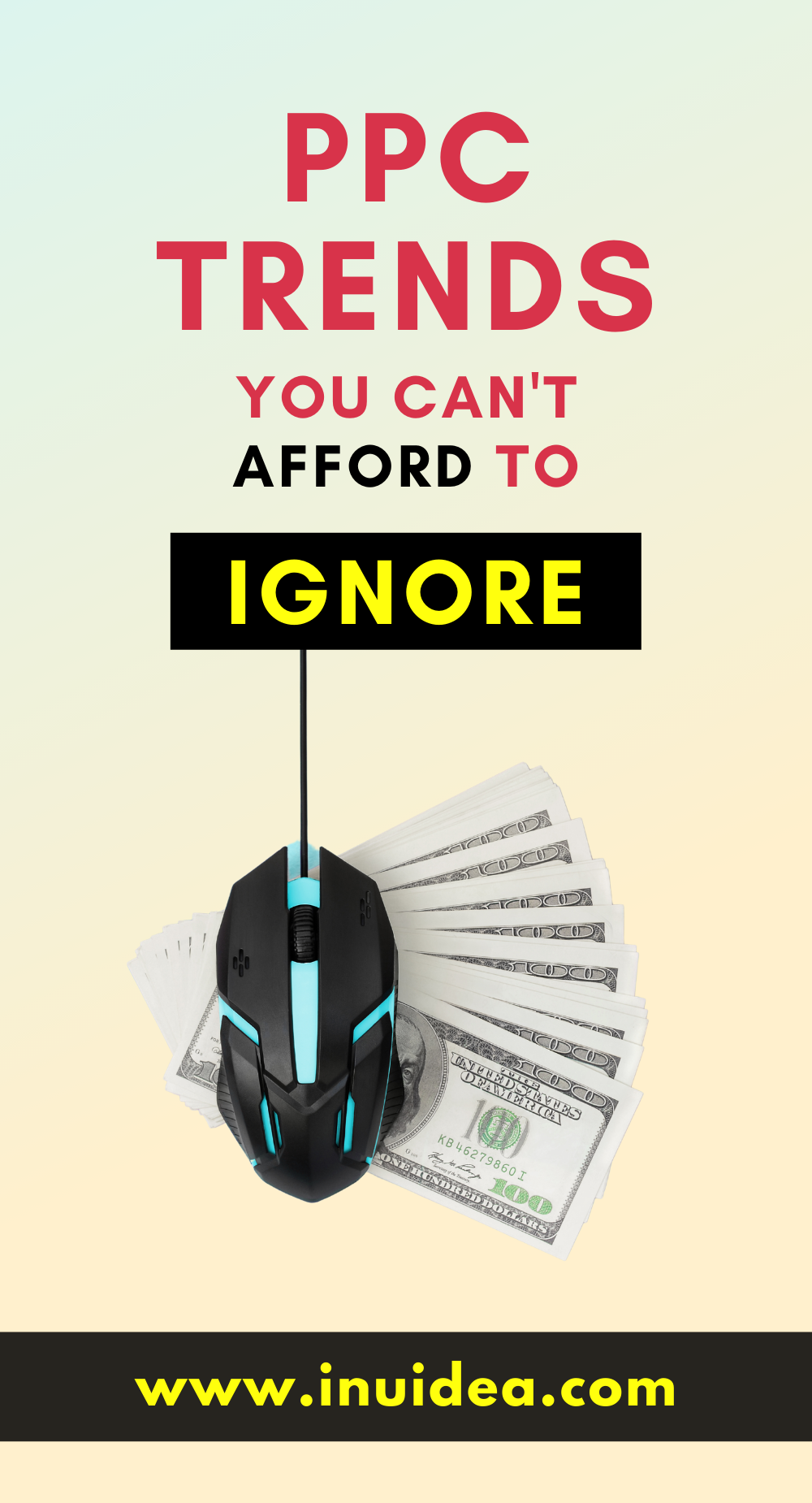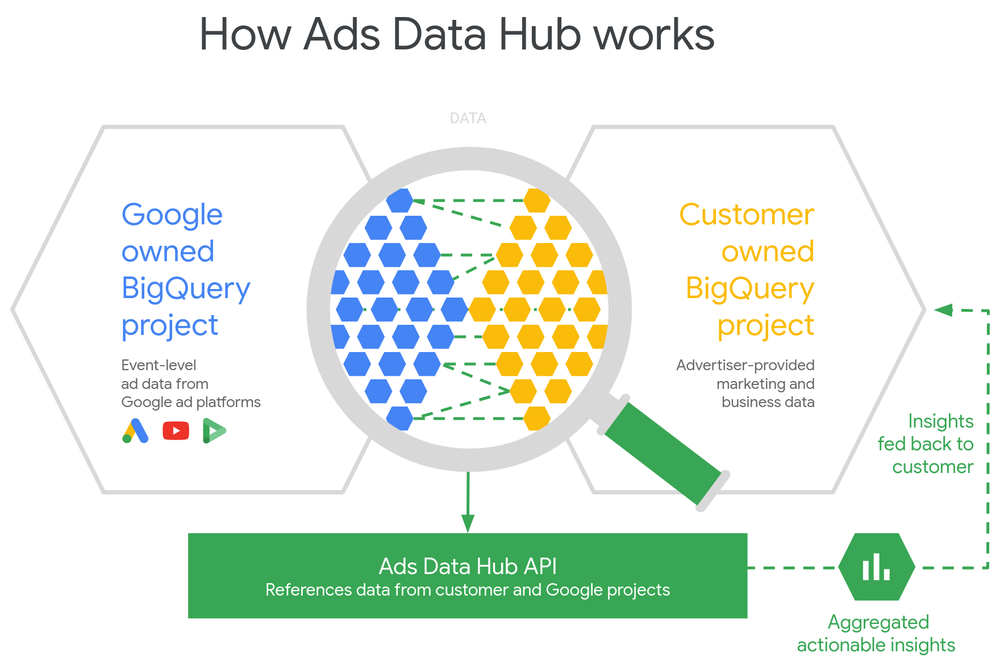Today, Google Ads and Bing Advertising are two big platforms to serve your Ads and do business. Regardless of your preference, you must be aware of the latest updates and how they can affect your ongoing campaigns and new campaign strategy.
Whether you are an advertiser or a complete paid marketing agency, it’s essential to stay tuned with the PPC trends to help your business grow.
Table of Contents
1. Capitalize Automation in PPC Ads
With a few recent updates by Google, your ads will start using automation for more layman tasks. It will soon work with Bing ads as well. Hence, you should grow your skills and find a way to maintain a seamless balance between your PPC Advertising and automation.
Automation in Google Ads isn’t new, but soon it will empower a significant part of the paid ads.
FACT: By 2021, it is believed that the automation industry around the world will expand significantly and generate up to $238 billion in revenue.
With automation, many of the tasks are done without instructions. Some of those tasks include:
- Calculate the right bidding strategy for different goals
- Set bids to achieve as many conversions as possible at a certain cost per action (CPA)
- Enhance cost per click (CPC) by finding ad auctions that will generate more conversions
- Stop ads that aren’t performing
- Find performance issues
- Create and optimize ad copy
- Generate automatic ad performance reports
FACT: The market size of process automation will increase from 71.5% to 83.2% by 2021

Image Source: https://www.singlegrain.com/wp-content/uploads/2019/12/Global-automation-market-size.png
Smart Bidding: It is a subset of automation that takes leverage of machine learning and artificial intelligence to optimize your Ads based on their goals. Google automation takes advantage of AI to optimize your Ads for conversion.
2. Embrace Artificial Intelligence
Since its evolution in 1956, Artificial Intelligence has been simplifying many labor-intensive tasks that give accurate results and provide quick results on a timely basis.
FACT: The economic impact of AI is expected to reach $15.7 trillion by 2030
In PPC, artificial intelligence is also planning big. Through AI, marketers/advertisers are capable of creating campaigns effectively. AI helps you predict the quality score, possible conversion rate, the effectiveness of an Ad, expected CTR (Click Through Rate), etc. for your new and existing campaigns.
The recent launch of Google Analytics 4 has already showcased a leap of AI from conventional features to advanced features. Simultaneously, AI lets you understand user behavior and serve them accordingly.
NOTE: AI-driven Ads are not only effective in Bing or Google Ads; instead, it works wonders with other Ad platforms as well (like Amazon Ads)
AI-powered Google Ads provides you with multiple benefits:
- Predict the CTR of future ads
- Analyze your Ads and their impact on Quality Score
- Identify the livelihood of Ads conversion.
- Analyzing Ads that can bring maximum traffic
- Optimize keywords, ads, or campaigns when a certain event happens (e.g., when your CPC falls below a specified amount)
With AI-driven technology, Adzooma (A Google Partner) lets you create automated PPC reports in a few steps.
3. Video Ads
Videos are the new mode of marketing.
FACT: By 2022, 82% of all business and consumer Internet traffic will come from videos, up from 75% in 2017.
Nowadays, PPC advertisers are more inclined towards Video Ads because it delivers high returns compared to other PPC practices.
Tech giants like Google, Facebook, Instagram, LinkedIn have already experienced a huge engagement on videos. Hence paid advertisers look at Video Ads as an excellent opportunity to boost their outcomes.
In 2019 Google Marketing Live Bumper Machine was introduced that bifurcates your video into 6-sec bumper video ads via machine learning. These Ads can be displayed as Bumper Ads, Skippable Ads, non-skippable Ads, in-Stream Ads, etc.
4. Switch From Pixel to Ads Data Hub
Pixel technology earlier helps marketers to track the effectiveness of their ads across mobile devices. However, post-2017, the usage of YouTube increased, and hence marketers were dependent on third-party pixels to measure the effectiveness of YouTube video campaigns.
Later in 2020, Google made the official announcement restricting third-party pixels for YouTube campaigns due to security concerns. This brings huge trouble for the marketing agencies to evaluable the YouTube Campaigns.
Finally, Google made its investment in Ads Data Hub that gives you a comprehensive report of how your Ads perform on different screens.
Even though there are a few limitations with Ads Data Hub, it effectively digs the insights of your Ads and user response to them.
5. YouTube Masthead on Big Screens
With time, the TV user base for YouTube is gradually increasing. Only on TV, YouTube counts to nearly 250 million watching hours daily. As a result, the exposure to wide screens gives benefits for YouTube Masthead that stick at the top of the homepage for 24 hours.
With this, the advertiser gets a broad range of opportunities to reach new audiences and serve their services/products for one day.
However, advertisers can use any CTA on the YouTube Masthead (to target TV Users). Moreover, the Masthead on TV Screens is only on CPM basis.
6. Smart Segment & Google AdMob
FACT: Mobile apps are expected to generate $581 billion in revenue in 2021 (and up to $935 billion by 2023!) via paid downloads and in-app advertising.
Google introduced the Smart segment in 2019 for the app developers to create revenue from non-spending users. The smart segment uses machine learning to understand the spending behavior (on app) of the user.
Based on the users’ spending behavior, the smart segment shows ads to the users who don’t spend money on the mobile apps as they are more likely to click on the ads.
Google AdMob is a smart analytics tool that helps you dive into the insights and improve your mobile application accordingly. In 2019, Google AdMob introduced some new features that include:
- User Engagement Card:
- Rewarded Ads Report
- AdMob API
- Easy Comparison Reporting
7. Voice Search in Paid Marketing
FACT: By 2020, 50% of all searches will be voice-based.
Undoubtedly, voice search brings tons of opportunities for advertisers from across the globe.
Multiple reasons contribute to the growing demand for voice search in advertising:
The mobile-first algorithm has increased attention towards mobile users, but overall mobile customers have also proliferated.
Neural Language has strengthened the voice search. The introduction of the BERT update has further made the neural language stronger.
Question-based queries have increased on search results. That’s where voice search plays a pivotal role.
The keywords starting from the following words have significantly increased in the last few years.
- Ok, Google
- Hey Siri
- Alexa
So, voice search lets you remove negative keywords from your list. You won’t consider spending on a “near me” keyword; until you are serving ads to local customers.
Above all, Call Extension on PPC Ads allows the users to call you directly.
8. Remarketing
Many advertisers overlook the remarketing concept in paid marketing. However, it is yet an effective way to re-invite your customers to take your services/products.
From 2021, the usage of remarketing has gradually increased. This has made it possible for the advertisers to reach a returning audience and get a significant conversion rate.
FACT: Remarketing/Retargeting can lift ad engagement rates up to 400%.
9. Integration of SEO and PPC
SEO and PPC go hand in hand. Putting your efforts together in SEO and PPC always provides you fruitful results.
A good advertiser never includes top-performing organic keywords in their PPC ad copies. Further, the use of long-tail keywords is effective in getting organic traffic and boosting your bidding strategy.
Bing and Google are working on numerous advanced technologies to provide full-fledged automation. Google has, however, already announced it with 17 other updates in the Google Marketing Live (held in 2019).
Yet, Bing is still in the testing phase with the AI-powered recommendations.
You must know that Google isn’t the only paid advertising platform today. Instead, many other rivals have come into play. Facebook, Twitter, Linkedin, Pinterest, Snapchat, Instagram, and Bing are some of the tough competitors for Google.
Whatever paid marketing channel you consider, stay updated with the changes and bring them into your advertising strategy for maximum results.
So, these are the listicle PPC trends that you shouldn’t ignore in building a strong PPC strategy. Yet, not all business owners are fully equipped to run a successful PPC campaign. Don’t worry! You can hire a professional digital marketing agency with PPC ads management services and let them pamper your business via paid marketing.
Do let us know which marketing practices you are already using and which one seems effective for the professional?
This is a guest post written by Gajendra Singh Rathore.
Gajendra Singh Rathore is a digital marketing expert and associated with a digital marketing agency Toronto. He is always eager to learn, experiment, and implement. Astronomy is his escape from the outside world. You can follow him on Twitter.
If you want to submit guest posts to Inuidea, check out the guest post guidelines for Inuidea.





Leave A Comment